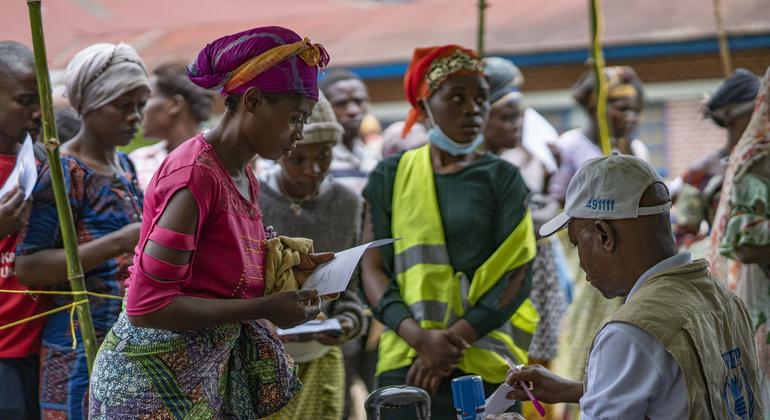
The situation is particularly alarming in the east, where malnutrition has taken hold among 4.4 million people, exacerbated by compromised health services, lack of clean water, and an uptick in gender-based violence, highlighted Peter Musoko, WFP Country Director, during a press briefing in Geneva.
“In my conversations with those displaced in eastern DRC, I was struck by their strength in the face of adversity. Their challenges, such as the daily struggle to secure enough food and the additional dangers women face when seeking sustenance, are deeply concerning,” he said.
“It is evident that the assistance we provide, though impactful, must be reinforced to ensure their well-being”.
Flexible funding has enabled WFP to procure vital complementary supplies such as pulses, oil, and salt, ensuring a comprehensive nutritional approach.
Critical juncture
However, the UN agency’s lifesaving programmes are at a crossroads due to a significant funding shortfall.
“The stark reality is that our operations hang in the balance and are at a critical juncture,” Mr. Musoko said.
While WFP managed to provide food aid to some 1.2 million people in July, funding has almost dried up.
Without additional funding, he said it was unlikely “will even approach half of our intended target,” Mr. Musoko added.
WFP requires a total of $728 million for its response efforts in eastern DRC, but a staggering funding gap of $567 million – equivalent to 78 percent of the required funds for the next six months – threatens to hamper relief efforts.
Lives at stake
The WFP official highlighted that the situation demands immediate attention.
“Lives are at stake, and the cost of inaction has untold consequences for the people,” he said, urging governments, donors, and humanitarian partners “to stand with us in this time of need.”
World’s worst food insecurity
Globally, DRC has the world’s largest number of food insecure. One in four Congolese, about 25.8 million people, cannot meet their basic food needs.
Compounding the crisis are outbreaks of preventable yet severe diseases such as measles, yellow fever, cholera, and malaria, which take a significant toll each year due to inadequate infrastructure, limited health access, and low vaccination coverage.



